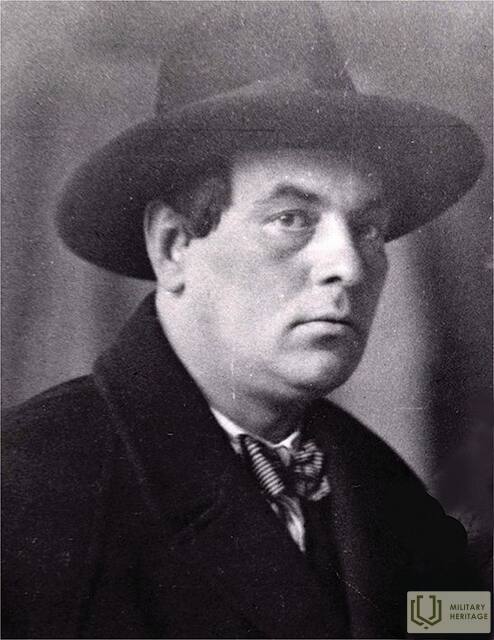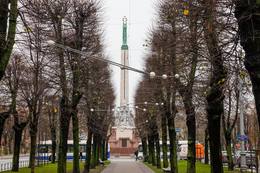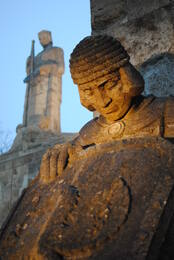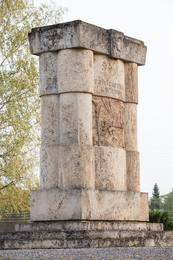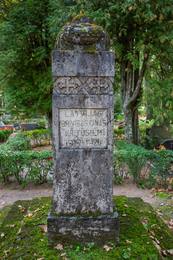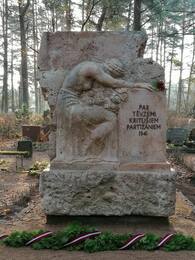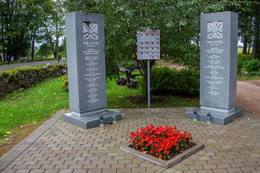Kārlis Zāle (1888-1942), skulptorius, Latvijos monumentaliosios skulptūros meistras
Kārlis Zāle (tikrasis vardas Johans Kārlis Leonhards Zālīte) gimė 1888 m. lapkričio 28 d. Mažeikuose, Kauno gubernijoje. Mokėsi vakariniuose piešimo, modeliavimo ir tapybos kursuose Liepojos miesto mokykloje, Kazanės meno mokykloje (1909–1913), skulptoriaus Stepano Erzjos (С.Д.Эрзья) dirbtuvėje Maskvoje (1914–1915), Imperatoriškoje draugijos mokykloje Petrograde, Petrogrado dailės akademijoje (19) ir Petrogrado dailės akademijoje Seminarai. Studijų tikslais jis apsistojo Berlyne (1921–1923) ir Italijoje (1926).
Reikšmingiausi Kārlis Zāle darbai – Rygos brolių kapinių ir Laisvės paminklo skulptūros. Brolių kapinių ansambliui Kārlis Zāle 1924–1936 metais kūrė skulptūrines grupes ir dekoratyvinius elementus (architektai Pēteris Feders, Aleksandrs Birzenieks, sodo architektas Andrejus Zeidaks). Ansamblį sudaro 11 skulptūrų.
Laisvės paminklui Rygoje (1931–1935, architektas Ernests Štālbergs) Kārlis Zāle sukūrė alegorinę Laisvės skulptūrą (vario kalimas, auksavimas), grupes dengiančias apatinę obelisko dalį, alegorines grupes postamento kampuose, du reljefus ant postamento paviršiaus reljefo plokštumose, ir du reljefus ant postamento paviršiaus.
Kārlis Zāle sukūrė skulptūrinį frizą paminklui Sudrabkalniņš, skirtą Rygą 1919 m. gynusiems Rygos pulko kariams (1929–1937 m., architektas E. Štālbergs), paminklą žuvusiems Latvijos laisvės kovose brolių kapinėse Jaunpiebalgoje, A. Rinieksl Smārdės stotyje (1936), 1941 m. prie Raganos nužudytiems gyventojams ir žuvusiems savisaugos dalyviams Inčukalno kapinėse (1944 m., sunaikintas, atstatytas 1988 m.) Taip pat yra sukūręs antkapius pavieniams asmenims.
1936–1940, taip pat 1941–1942 metais Kārlis Zāle vadovavo Dailės akademijos skulptūrų dirbtuvėms. Kārlis Zāle buvo UL studentų draugijos „Konkordia Valdemārija“ narys.
Kārlis Zāle buvo Trijų Žvaigždžių ordino didysis karininkas (1935), Tėvynės premijos laureatas (1938), Latvijos dailės akademijos garbės narys (1939).
Kārlis Zāle mirė 1942 m. vasario 19 d. savo namuose „Atvasītē“ Inčukalno valsčiuje ir buvo palaidotas Rygos brolių kapinėse.
Daugiau informacijos šaltinių
Laila Bremša. Karlas Holas. Nacionalinė enciklopedija: https://enciklopedija.lv/skirklis/34800
Vaidelotis Apsītis, Laisvės paminklas. - Ryga, Zinātne, 1993 m.
Vaidelotis Apsītis, Brolių kapinės, Ryga, Mokslas.- 1995 m.
Rygos brolių kapinėse. 1915-1936-2011, komp. Guntis Gailītis.- Ryga, Jumava, 2011 m.
Susijusi laiko juosta
Susijusios vietos
The Freedom Monument in Riga
It is located in the center of Riga, on Brīvības Square.
The Freedom Monument is one of the most outstanding monuments of Latvian history, architecture and art. It was built according to the project of Kārļis Zaales based on public donations. Opened in 1935 as a symbol of Latvian people's freedom and love of the fatherland. Together with the Riga Brothers' Tomb ensemble, it belongs to the most valuable examples of monumental architecture and sculpture.
The Freedom Monument expresses the ethical and aesthetic values of Latvian culture. The symbols reflect the philosophical nature of freedom and the Latvian nation's historical ideas about the stages of the struggle for independence. Indicates the embodiment of physical and mental strength. The heroic language tells about the Latvian nation as a self-reliant, active maker of history and a determiner of its own destiny.
In its place, there was originally a monument to the Russian Tsar Peter I. In World War 1, it was dismantled to be transported by ship to Petrograd. The ship was torpedoed by a German submarine and sank off the island of Worms in the Estonian territory. The Soviet occupation regime planned to demolish the Freedom Monument several times, but it did not materialize.
Nowadays, you can see one of the symbols of Latvia and observe the traditions of the army honor guard.
Brothers' Cemetery in Riga
Riga Brothers’ Cemetery is located in the northern district of Riga. The cemetery extends over an area of 9 ha and is the most outstanding and significant memorial ensemble in Latvia dedicated to the fallen Latvian soldiers. About 3,000 soldiers are buried here. The Brothers’ Cemetery was created during World War I after the first three Latvian Riflemen, who fell in Tīreļpurvs in the battle against the German Army, were buried here. Later Latvian soldiers who had died in other battles and wars would also be buried in the Brothers’ Cemetery. The memorial is based on the design of the sculptor Kārlis Zāle, and is the first memorial ensemble in Europe with such landscape, architecture and sculptural value. It uses elements typical to the Latvian landscape, traditional farmsteads, Latvian folklore and history that praise the characteristics of soldiers and tell the story of the way of the soldier. The memorial was unveiled in 1936 and it has three parts: ‘The Road of Though’ which is a 250 m long alley, ‘Terrace of Heroes’ with the Altar of the Sacred Flame and ensemble the Sacred Oak Grove, and the burial ground with the Latvian wall and a memorial of a mother with her fallen sons.
Monument in memory of the soldiers killed in the War of Independence
Located near Jaunpiebalga St. Thomas Evangelical Lutheran Church.
The monument to the members of Jaunpiebalga parish who fell in the War of Independence was created by the sculptor Kārlis Zāle and the architect Aleksandrs Birzenieks.
The monument was unveiled on June 29, 1930. It was designed by the sculptor Kārlis Zāle and the architect Aleksandrs Birzenieks, but the forging works were performed at the E. Kurau stone quarry in Riga. The monument is designed as an architectural arch. There are two columns with a solid cover on the three-level terrace. Between the columns is a figural tab - Mother blesses two wounded sons.
According to the information provided to J. Lismanis by the teacher of Jaunpiebalga Secondary School Vēsma Johansone, an urn with a list of 125 fallen members of the congregation has been laid in the foundations of the monument. Only 60 people were mentioned in the press at that time. On the same day, a "grove of heroes" was planted around the church - 60 oaks.
The St. Thomas Evangelical Lutheran Church in Jaunpiebalga was consecrated on July 4, 1804, but from 1871 to 1873 the church was rebuilt according to the design of Matthias von Holst. It has 800 seats and an oak altar and pulpit. When the church of Jaunpiebalga celebrated its 200th anniversary, the church was named after St. Thomas.
The Jaunpiebalga Church, which is a cultural monument of national significance and the largest Lutheran church outside Riga, has played an important role in shaping the spiritual world of many outstanding creative personalities.
Military heritage monuments in Dīvaliņš cemetery in Valmiera
Located in Valmiera Dīvala (Jāņa) cemetery in Valmiera.
A monument made in the Allaži limestone by sculptor Marta Lange was unveiled on September 26, 1937.
The pillared monument is closed by an inclined altar, on which there is an oak wreath and a helmet made of limestone.
Approximately 80 soldiers who died in the Latvian War of Independence, as well as those who died from injuries and illnesses, are buried.
Nearby is one of the lesser-known works of Kārlis Zāle - a monument “Broken Roses”, which is connected with the establishment of the Brothers' Cemetery Ensemble.
There is also a memorial to the victims of communist terror - a stone with the inscription: "The assassins of the 1941 communist regime" and white crosses.
Sudrabkalniņš hill - memorial for fight against Bermondt army
Located in Riga, Pardaugava, at the intersection of Sloka and Kurzeme Avenue.
At the beginning of November 1919, during the Latvian War of Independence, street battles between the Latvian Army and Bermont troops took place in Pardaugava. A decisive attack on the Bermont army took place in the area. In 1937, according to the project of Kārlis Zāle, a monument was unveiled in Sudrabkalniņa, honoring the fallen soldiers of the 6th Riga Infantry Regiment and highlighting the military features.
Designed as a memorial wall - a symbolic fortification, the gate of which depicts a lion blocking the path of an opponent's attack. Bricked from the stone blocks of the Daugavgrīva fortress protective wall and forged from the remaining granite of the Freedom Monument. The cost of the memorial site was almost 35,000 lats. For comparison, 4 “Ford - Vairogs V8 De Luxe” cars manufactured in Latvia could be purchased for such an amount.
Today you can see one of the most impressive places of remembrance of the War of Independence.
Monument "Grieving mother" at Inčukalns Cemetery of Honour
Located: Inčukalns district, Inčukalns, Miera street, Inčukalns cemetery.
The monument was unveiled on July 16, 1944. The monument was discovered after the death of K. Zāle. Inscription: On the partisans who fell to the Fatherland in 1941 (restored). The monument was restored on November 5, 2020. The monument was restored with the support of Inčukalns County Council. Restorer artist Igor Dobichin.
Events: “1940. On June 17, Latvia was occupied by the USSR. On June 14, 1941, deportations took place. On June 22, 1941, Germany attacked the USSR and parts of the Wehrmacht entered Latvia. The Red Army and its supporters withdrew. In many places in Latvia - including Ragana, Sēja and Inčukalns - former guards and patriotic young people organized to protect their homes and hurry to expel the Soviet occupiers. When the flag of the Free State of Latvia was hoisted again on July 1, 1941 in the sown parish "Ziediņi", special units of the Red Army at the Northern Cemetery shot the owner of this house - 39-year-old Elza Viša, but on the border of Sēja and Krimulda parish her mother - 64-year-old Elza Martinovu. The residents of the area caused even more hatred and outrage, and they began to gather in the popular resistance movement and form self-defense units, which were also called the first partisans (the leader of the Inčukalns group was Maksis Cālītis). Soldiers and officers who had escaped from the Litene military camp or were released from the so-called Latvian territorial corps also joined the fighters of the county. An armed clash with the Reds took place a few days later, on July 4, seven soldiers and the son of Ragana's pharmacist Pēteris Prašķēvičs fell. In addition, Jānis Porietis, a 17-year-old student of the Rēzekne Teachers' Institute, was injured and captured in the Battle of Ragana and tortured, shot and buried near Straupe.
Here in Inčukalns, a common grave of the brothers was excavated, to which coffins made of white unplaned boards were brought in eight horse-drawn carriages to lay the fallen heroes in their homeland. A few months later, already during the German occupation, a monument was erected in the cemetery by Kārlis Zāle (from 1939 until the end of his life on February 19, 1942, due to a serious illness, the genius Latvian sculptor chose Inčukalns as his residence) - the image of a mourning mother over a rose lap. In the 1950s, local Communist Party activists blew up the monument. The monument was damaged and stagnant until the Awakening, when in the late 80's more and more people became interested and talked about the events of July 4, 1941 and called for the restoration of the monument to Charles Hall. Such a demand was made at the meeting of people and power convened at Inčukalns Primary School on September 8, 1988, which was attended not only by Inčukalns residents, but also by residents of nearby parishes, as well as members of the Environmental Protection Club and LNNK from Riga.
In The people of Inčukalns - Teodors Ildens, Arvīds Blaus, Pēteris Vorfolomējevs -… and many other patriotic people actively participated in the restoration of the monument. On July 4, 1989, in a solemn ceremony, the reborn noble and sad tabby was consecrated by Pastor Vaira Bitena. ”
Memorial places for generals and knights of the Lāčplēsis War Order in Trikāta Parish
The memorial stele is located next to the Trikāta cemetery chapel.
Trikāta Cemetery preserves the memory of three outstanding Latvian generals - Roberts Dambītis, Kārlis Goppers and Jānis Balodis. Jēkabs Mūrnieks, a teacher of all these generals, is also buried in Trikāta cemetery.
The generals and the knights of the Lāčplēsis Military Order are commemorated every year with torchlight processions to the Trikāta cemetery, where there are two memorial statues, in which the names of 17 knights of the Lāčplēsis Military Order associated with Trikāta parish are engraved.
Stela was opened on November 11, 2018.
Video story about the Lāčplēsis War Order and the set of orders that belonged to General Jānis Balodis.
Susijusi istorija
Oskarui Kalpakui atminti
Oskaro Kalpako atminimas saugomas daug kur – tai liudija jo gimtasis Liepsalu namas, paminklas Visagalos kapinėse, atminimo renginiai ir gražūs Kovo 6-osios koncertai, Meirānu Kalpako pagrindinė mokykla, gatvės Lubanoje, Madonoje ir kituose miestuose ir toliau. Bet šiame straipsnyje – apie Oskaro Kalpako atminimo išsaugojimą gimtinėje XX amžiaus 2–3 dešimtmetyje. metų.




